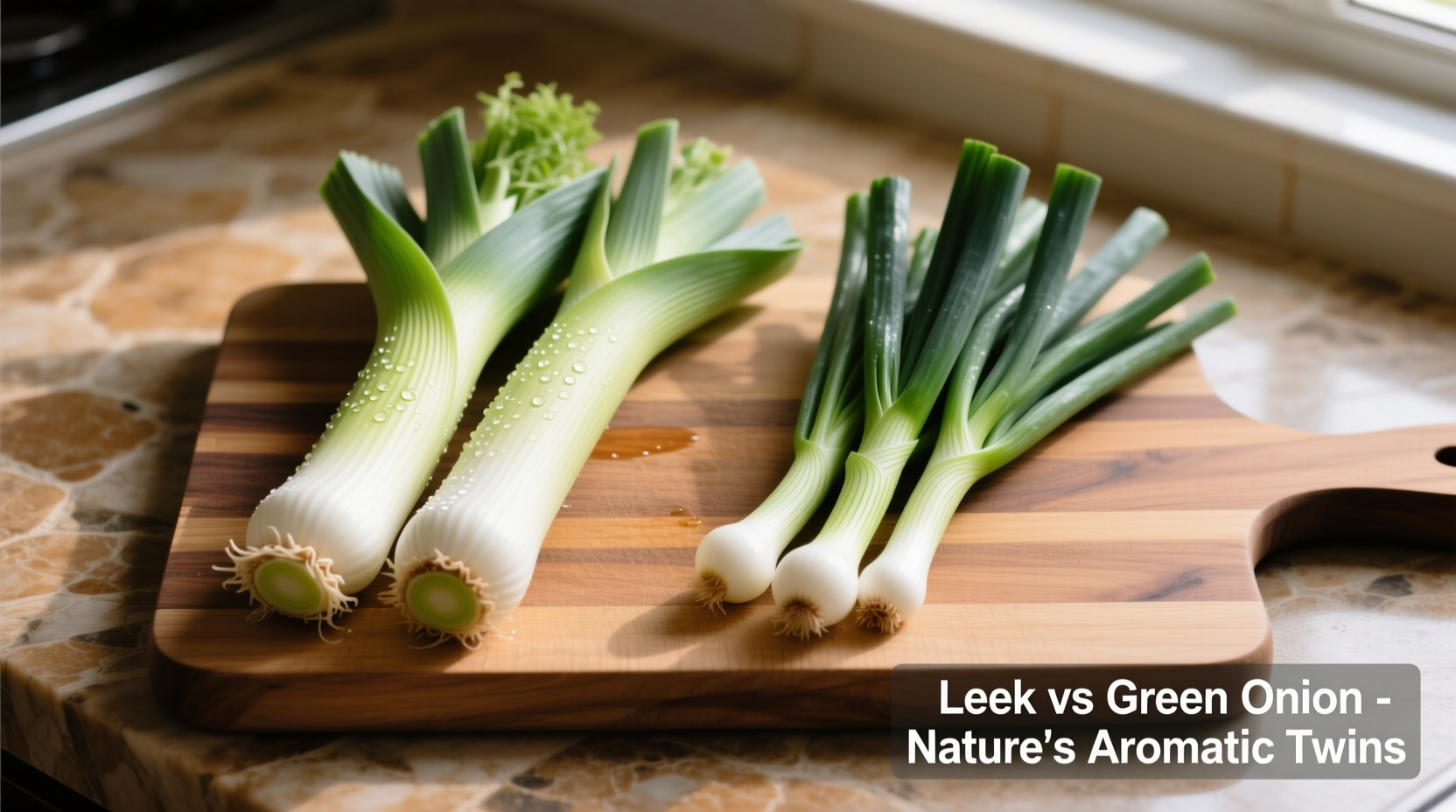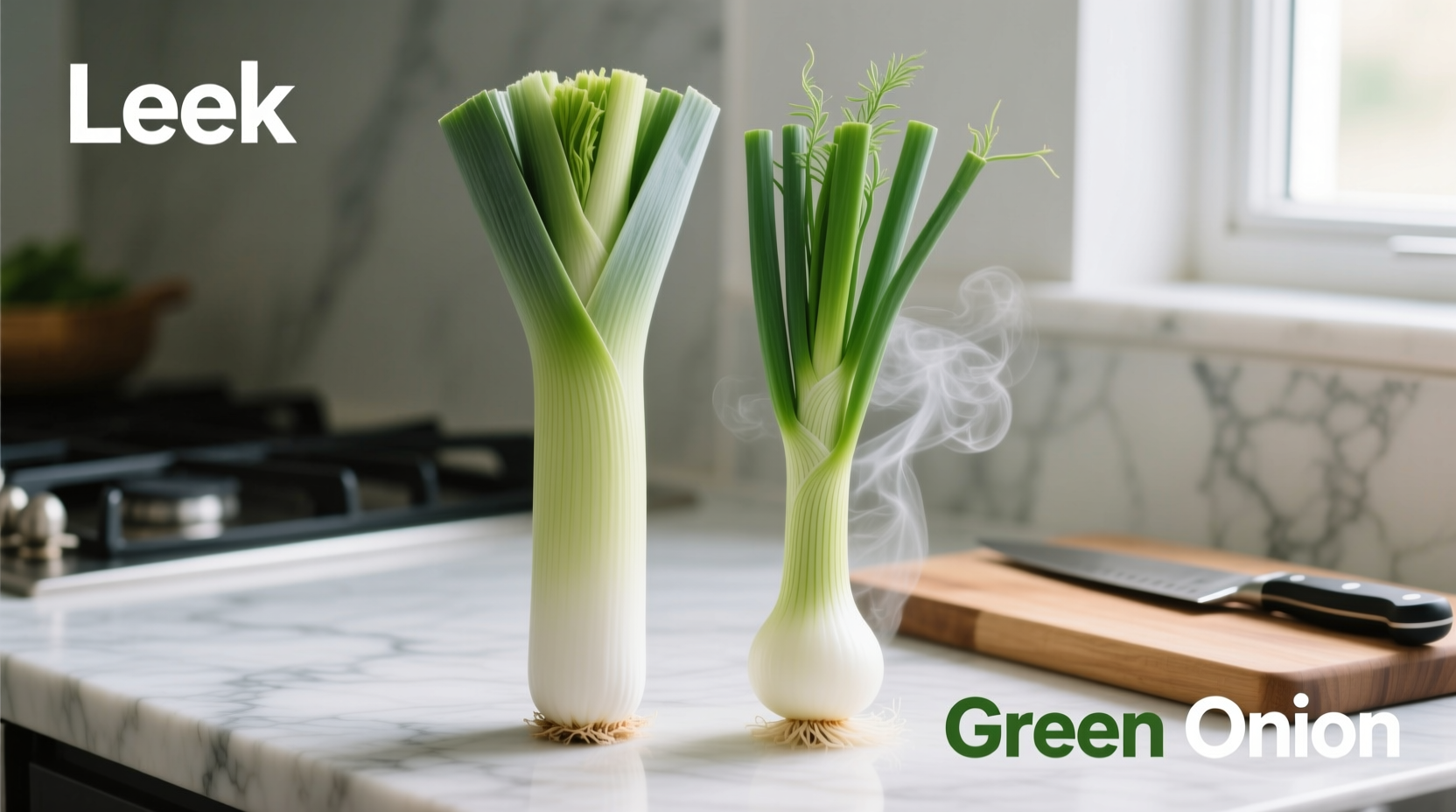Spotting the Difference: Your Visual Identification Guide
At first glance, leeks and green onions might seem interchangeable, but understanding their distinct physical characteristics prevents recipe disasters. Leeks (Allium ampeloprasum) resemble oversized green onions with thick, cylindrical white bulbs tapering to dark green leaves. Mature leeks typically measure 1-2 inches in diameter and 12-18 inches long. Green onions (Allium fistulosum), also called scallions, feature slender 1/4-inch bulbs with hollow green stalks—never developing a substantial bulb like their leek cousins.
| Characteristic | Leeks | Green Onions |
|---|---|---|
| Botanical Name | Allium ampeloprasum | Allium fistulosum |
| Bulb Development | Substantial white bulb (1-2" diameter) | Minimal bulb (slender, 1/4" diameter) |
| Flavor Profile | Mild, sweet, subtle onion essence | Sharp, pungent, distinctly oniony |
| Ideal Cooking Method | Slow cooking, braising, soups | Raw garnishes, quick sautés |
| Nutritional Advantage | Higher in vitamin K and manganese | Richer in vitamin C and folate |
Flavor Profiles That Transform Your Dishes
Understanding flavor differences prevents culinary mishaps. Leeks deliver a delicate sweetness that intensifies when cooked slowly, making them ideal for French potages and creamy sauces. Their flavor develops complexity through caramelization without overwhelming other ingredients. Green onions offer immediate pungency—their white bases provide sharp onion notes while the green tops contribute grassy freshness. This dual-character makes them perfect for Asian stir-fries and Mexican salsas where quick cooking preserves their vibrant bite.

Culinary Applications: When to Choose Which
Professional chefs follow specific usage guidelines based on cooking technique and desired outcome. Leeks shine in dishes requiring extended cooking time—their structure holds up in stews, gratins, and quiches. The white and light green portions work best after thorough cleaning to remove trapped soil. Green onions excel as finishing elements: thinly sliced over finished dishes or added in the last minute of cooking. Their hollow structure wilts quickly, making them unsuitable for long simmering where they'd turn bitter.
Smart Substitution Strategies
Running short on one ingredient? Successful substitutions depend on cooking method. When replacing leeks with green onions, use triple the quantity and add them later in cooking to prevent overpowering—ideal for quick sauces but not for slow-braised dishes. Substituting leeks for green onions requires using only the dark green tops raw, as the white portion remains too fibrous when uncooked. For raw applications like salads, shallots make better leek substitutes than green onions due to similar mildness.
Selection and Storage Secrets
Choose firm, crisp specimens with vibrant green tops and white bases free from browning. Leeks maintain freshness for 1-2 weeks when wrapped in damp paper towels inside a perforated plastic bag in your refrigerator's crisper drawer. Green onions last 5-7 days stored upright in a glass of water covered with a plastic bag. Never freeze either whole—they lose texture—but you can freeze chopped portions for cooked dishes after blanching.
Nutritional Comparison for Health-Conscious Cooks
Both provide valuable nutrients but excel in different areas. A 100g serving of leeks contains 61% of your daily vitamin K needs—crucial for blood clotting and bone health—plus significant manganese for metabolism. Green onions deliver 20% more vitamin C per serving, supporting immune function and collagen production. For low-calorie cooking, both options shine: leeks contain just 61 calories per cup while green onions have only 32 calories per 100g. The darker green portions of both contain higher antioxidant concentrations than their white bases.











 浙公网安备
33010002000092号
浙公网安备
33010002000092号 浙B2-20120091-4
浙B2-20120091-4